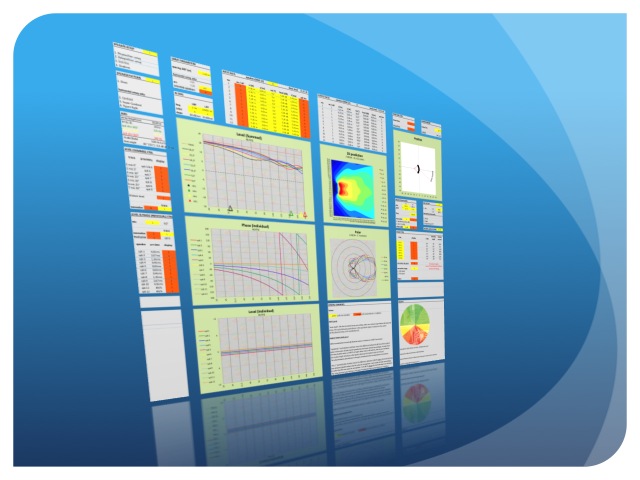This spreadsheet is the Swiss Army knife for subwoofer configurations. It helps you design, in real-time, cardioid configurations like end-fire and gradient. Horizontal arrays such as physical arcs and straight delay‑tapered arrays.
You can use up to 12 speakers with omnidirectional, cardioid, and super-cardioid speaker patterns. Apply low- and high‑pass filters. Look at absolute and relative arrival times.
It displays frequency and phase responses for up to 7 microphones, and shows you SPL, polar, and beamwidth plots. The comprehensive info‑panel will assist you in making design decisions, and nearly everything can be normalized in order to study relative differences.
As of version 1.4 results can be exported into Meyer Sound's MAPP XT™ for increased precision.
The exhaustive 71‑page manual covers all features and contains several tutorials.
features:
- real-time
- configurations
- horizontal arrays
- physical arc
- straight delay‑taperd
- end-fire
- gradient
- horizontal arrays
- speaker patterns
- omni
- cardioid
- super-cardioid
- frequency and phase responses for up to 7 microphones (48 points-per-octave)
- plots
- SPL (32 x 32 points)
- absolute
- normalization
- source
- destination
- polar (up to 7 adjustable frequencies)
- 1° resolution
- coverage angle analysis
- beamwidth
- 12 PPO
- 5° resolution
- SPL (32 x 32 points)
- filters (frequency response only)
- low-pass
- high-pass
- Linkwitz-Riley topology
- advanced level tapering to control side lobes with 15 different window functions to choose from
- export to Meyer Sound MAPP T™
file type: Microsoft Excel Open XML spreadsheet (.xlsx)
minimum requirements:
- Excel 2007 or higher
- Excel 2008 or higher
download manual:
download calculator:

